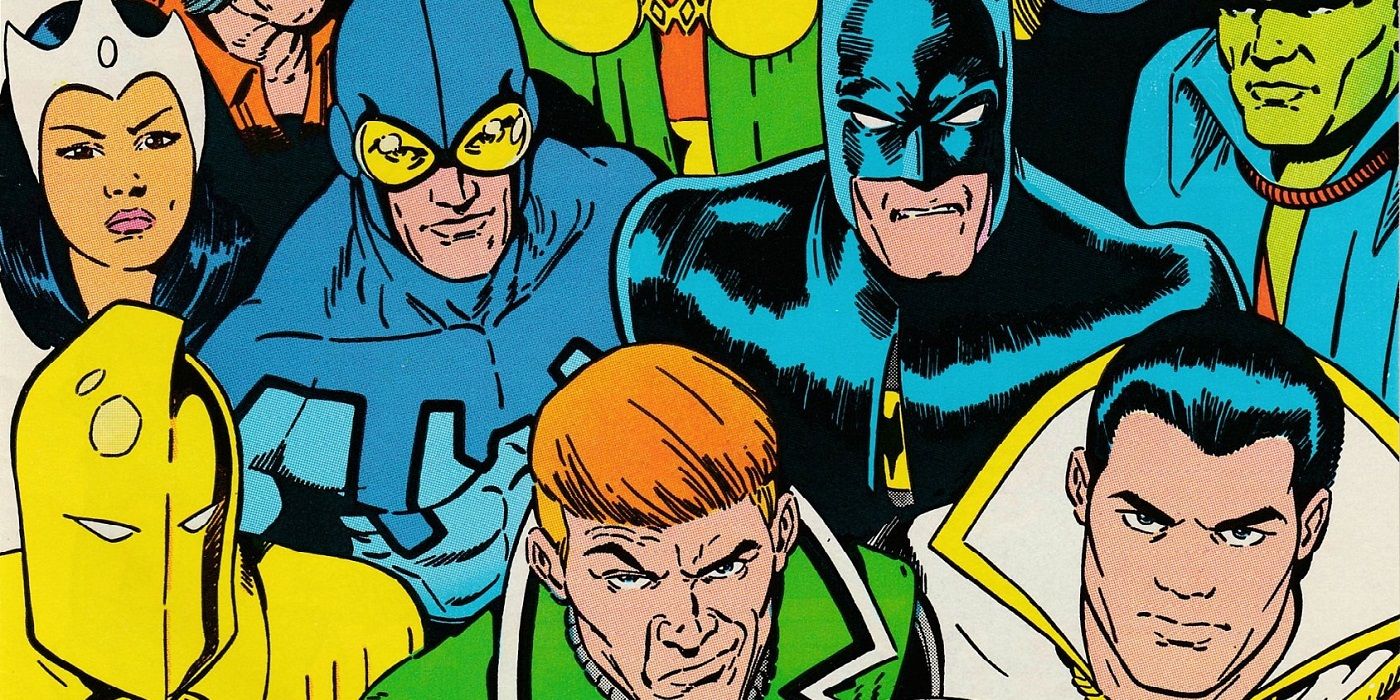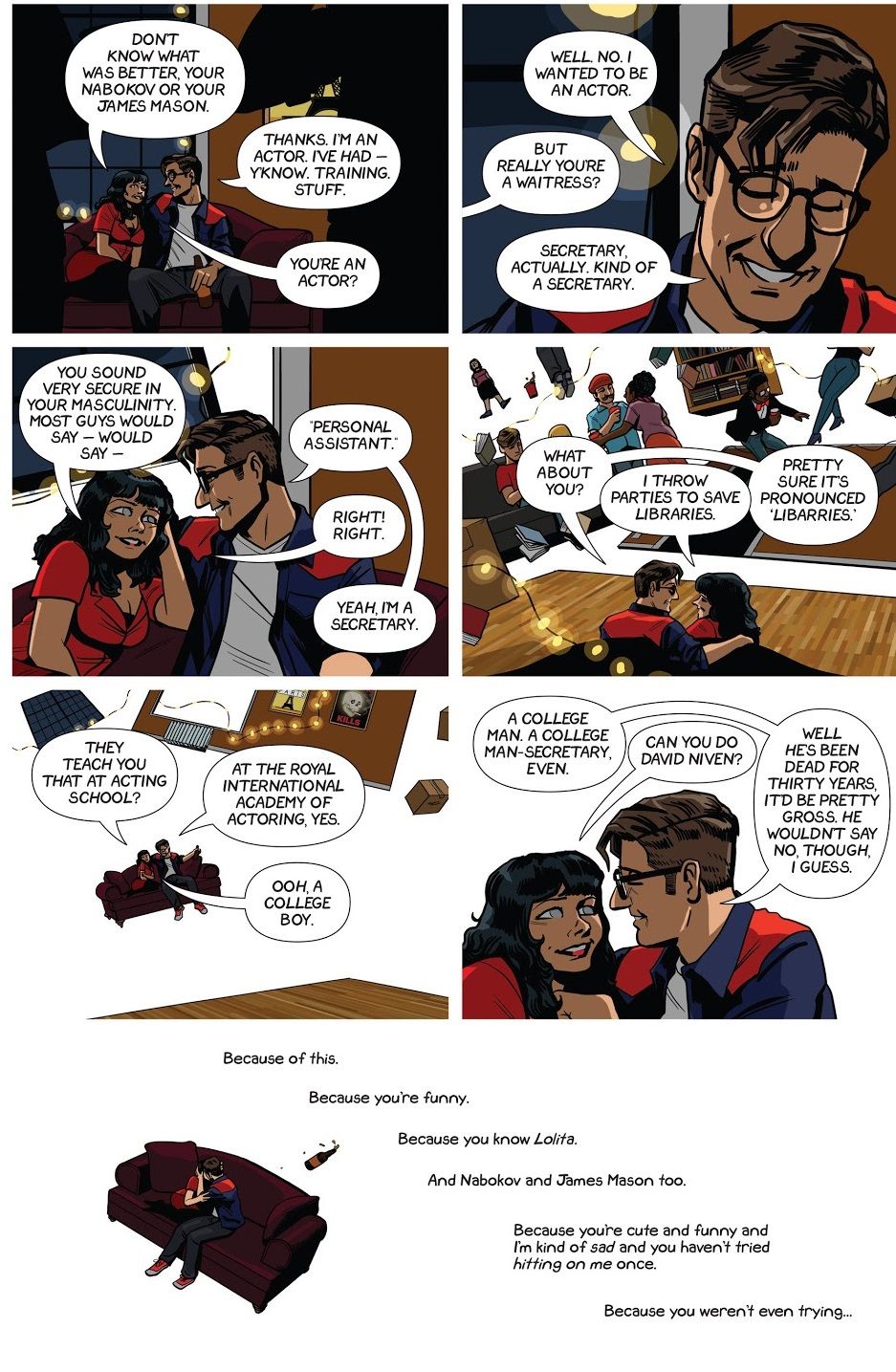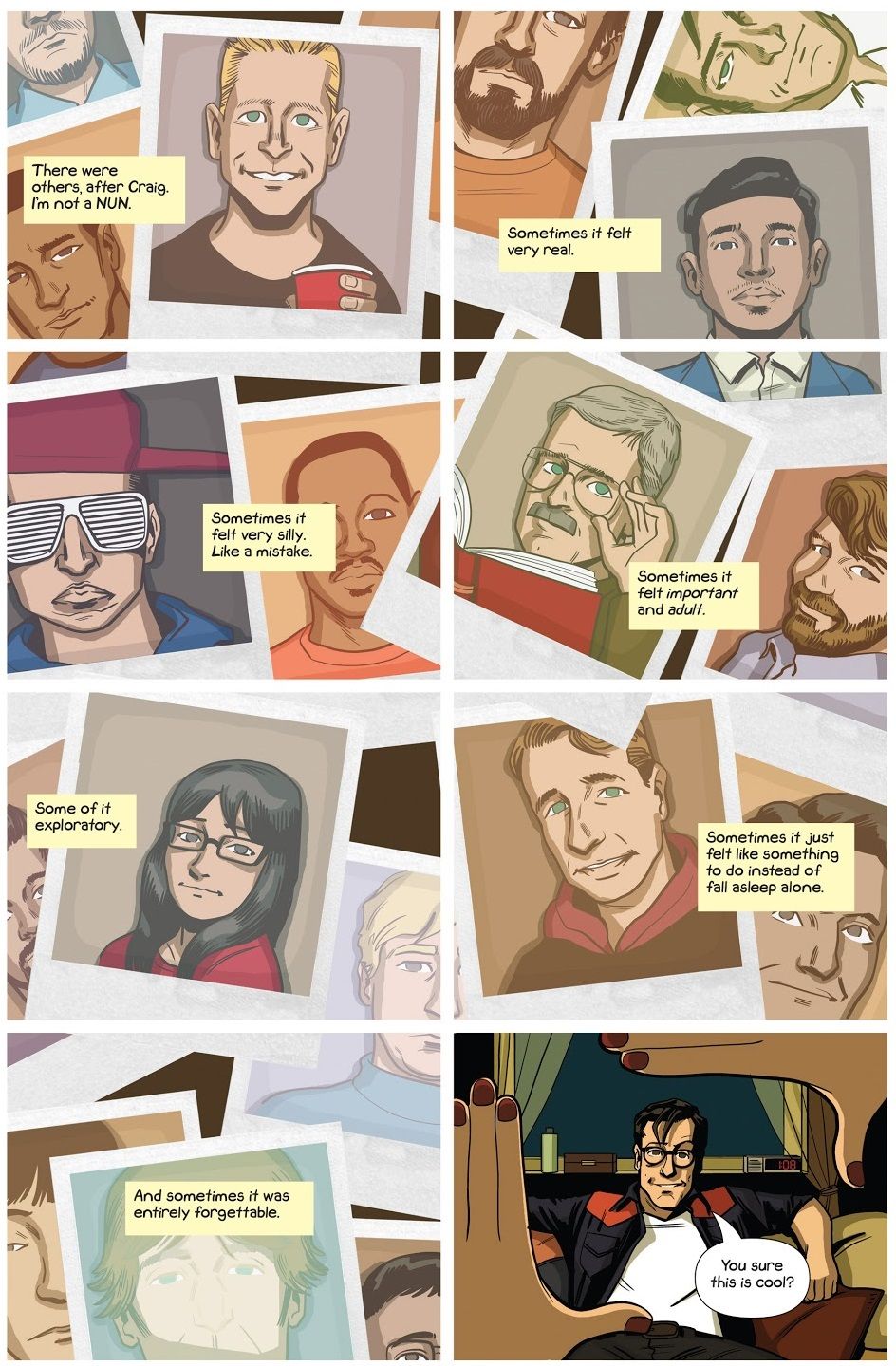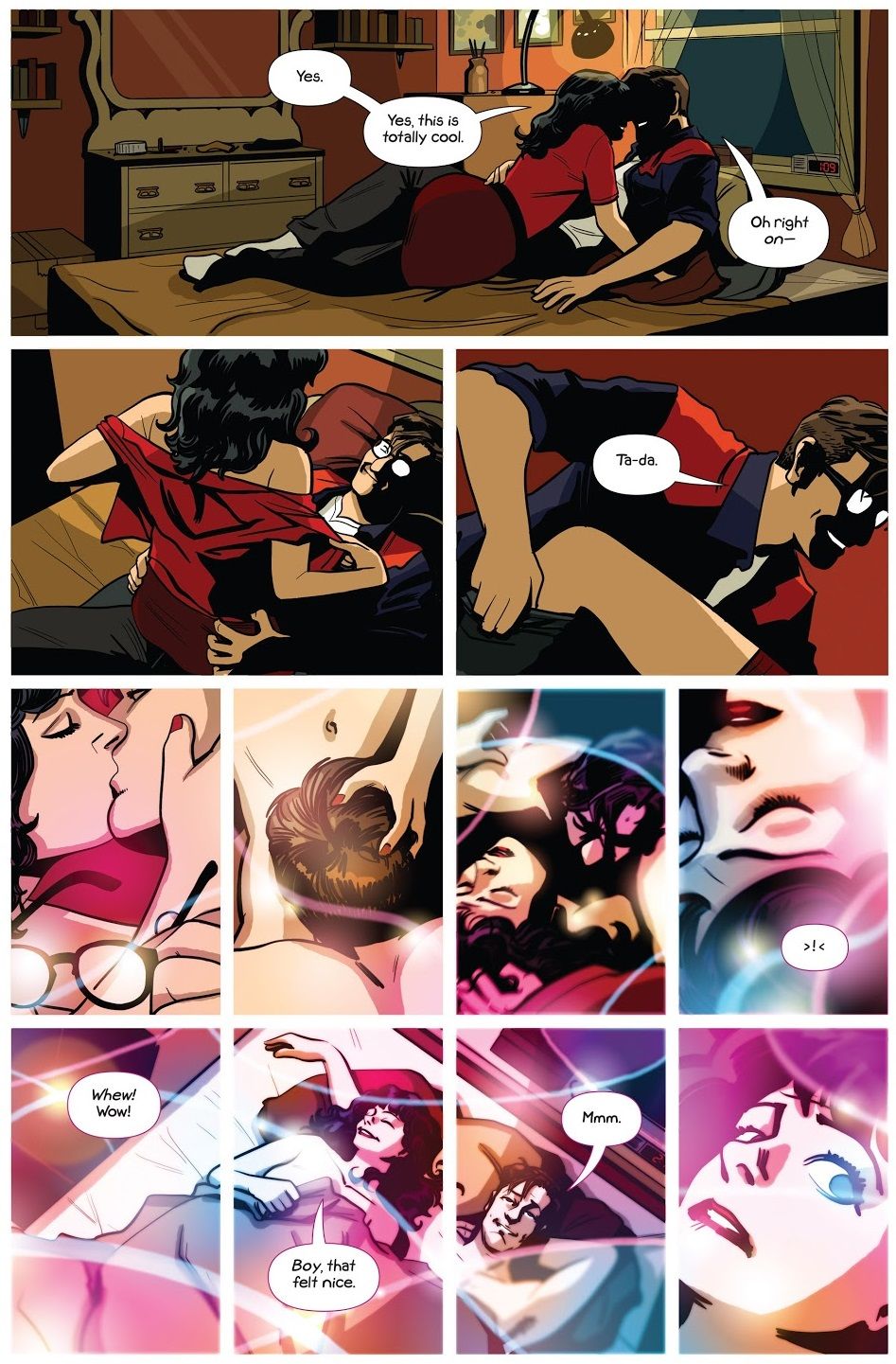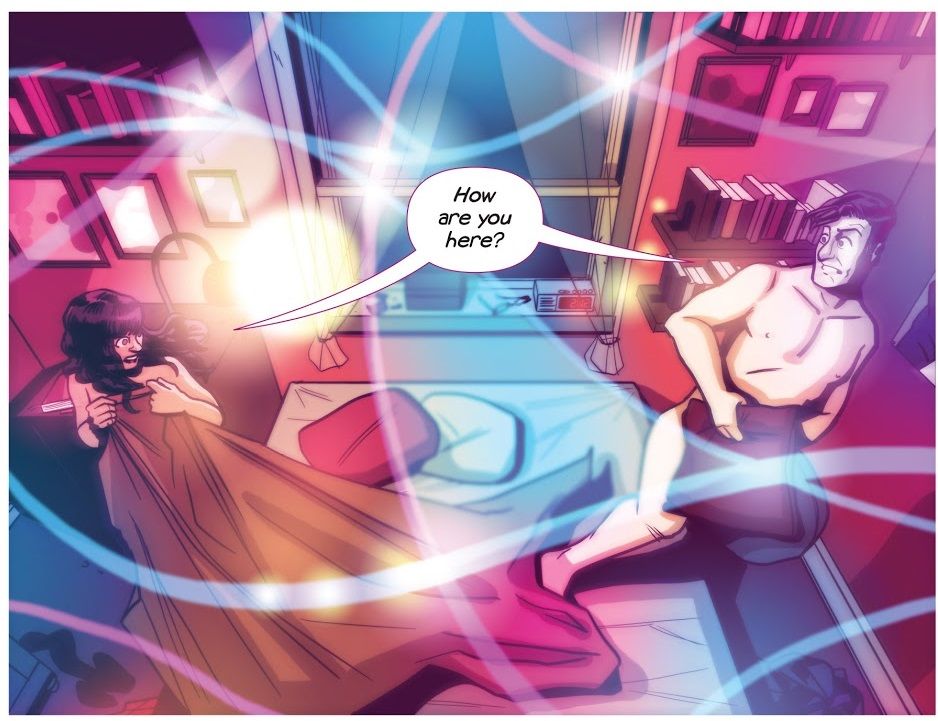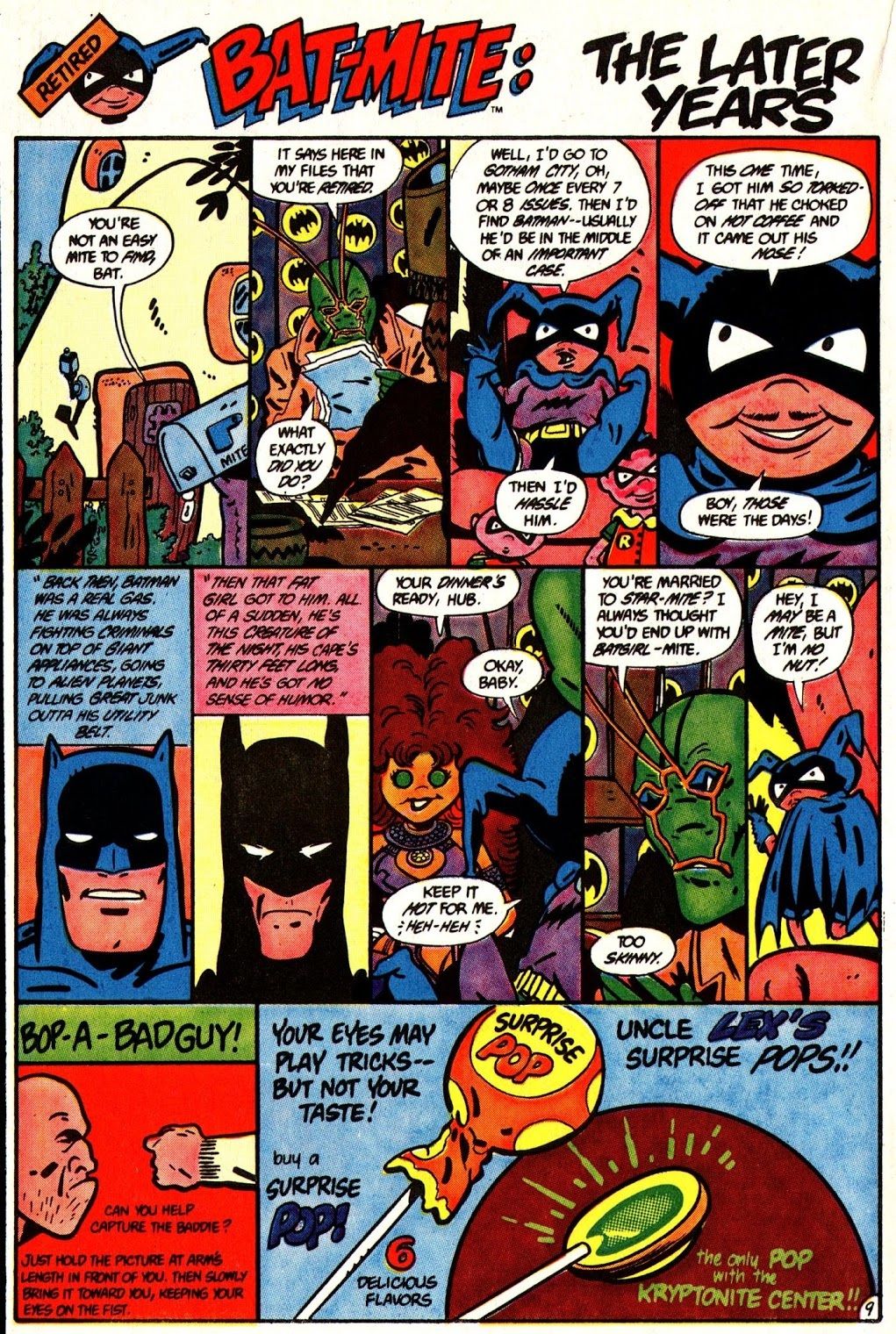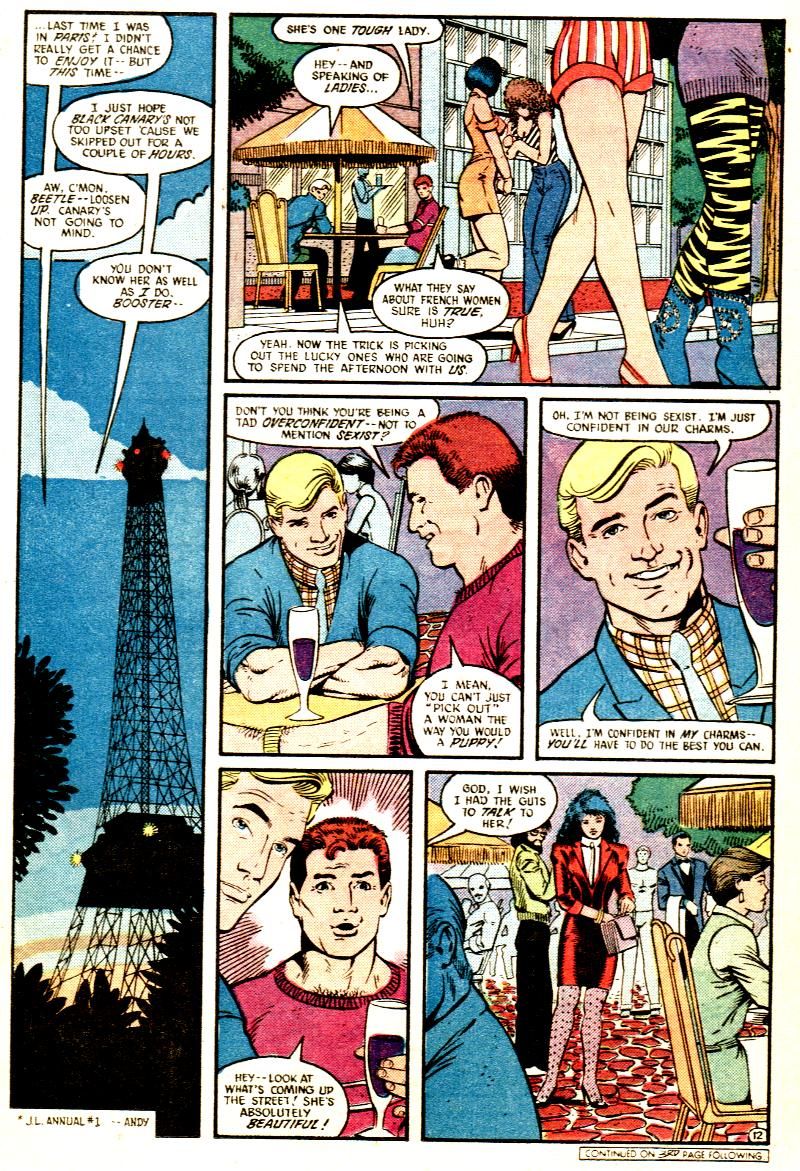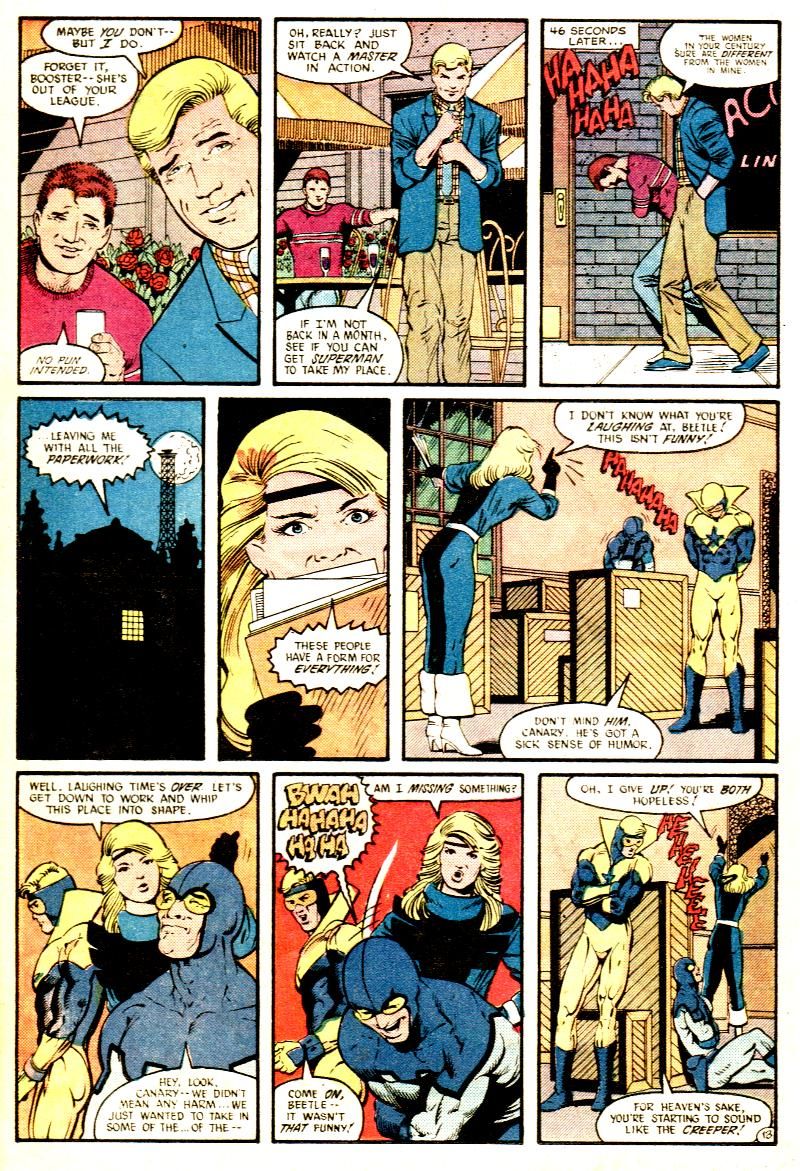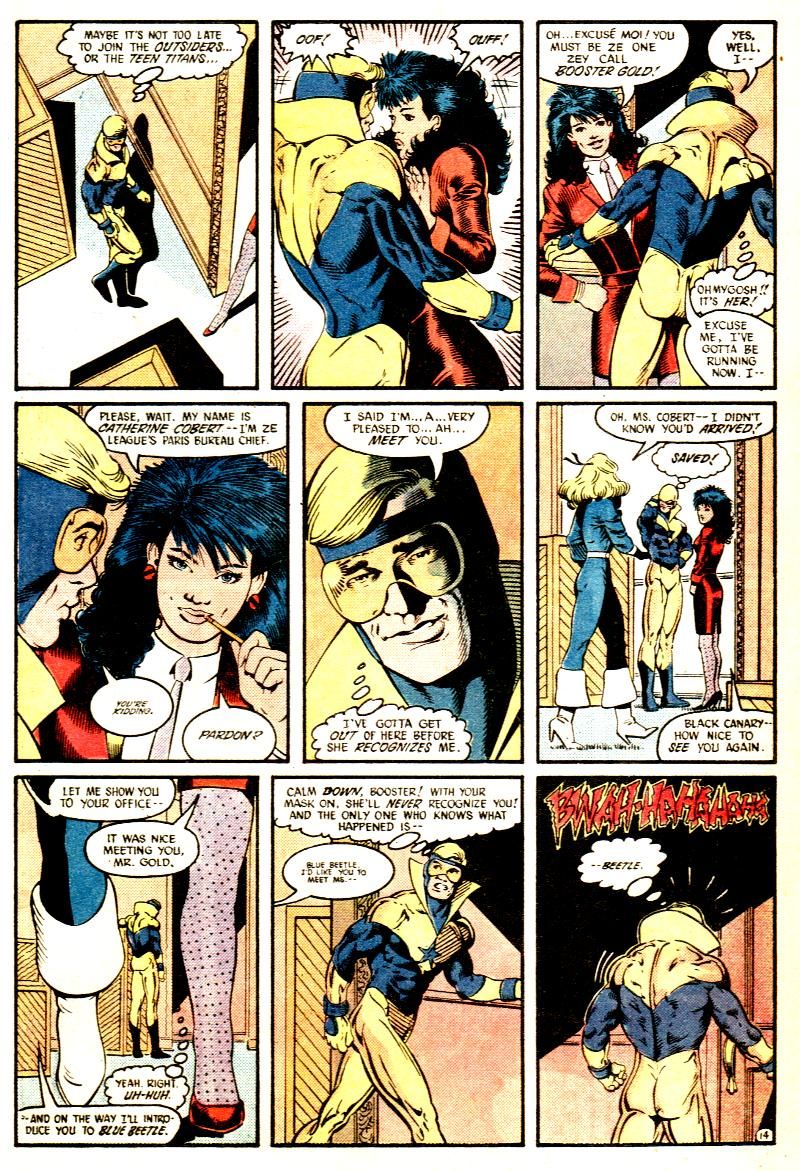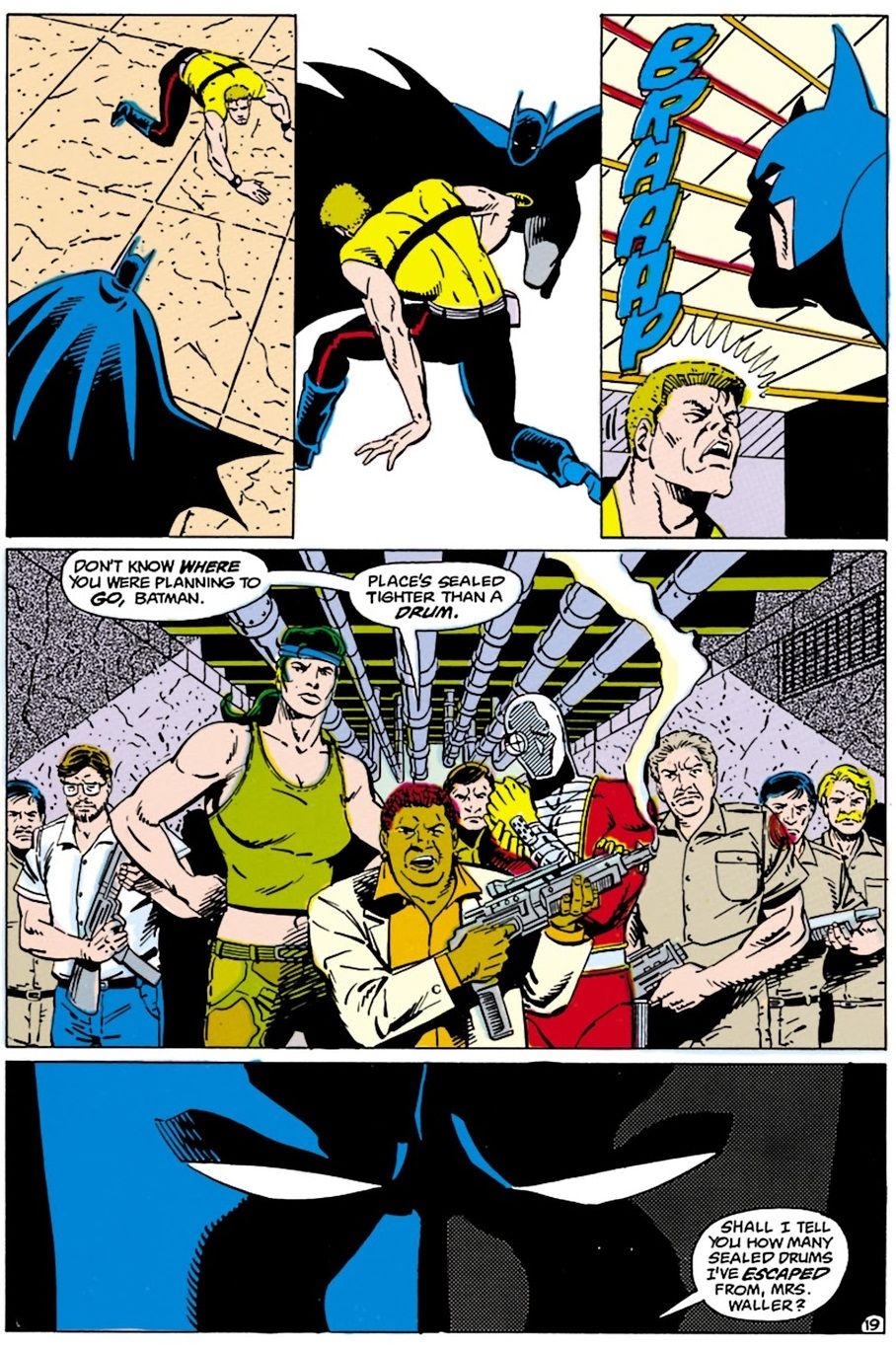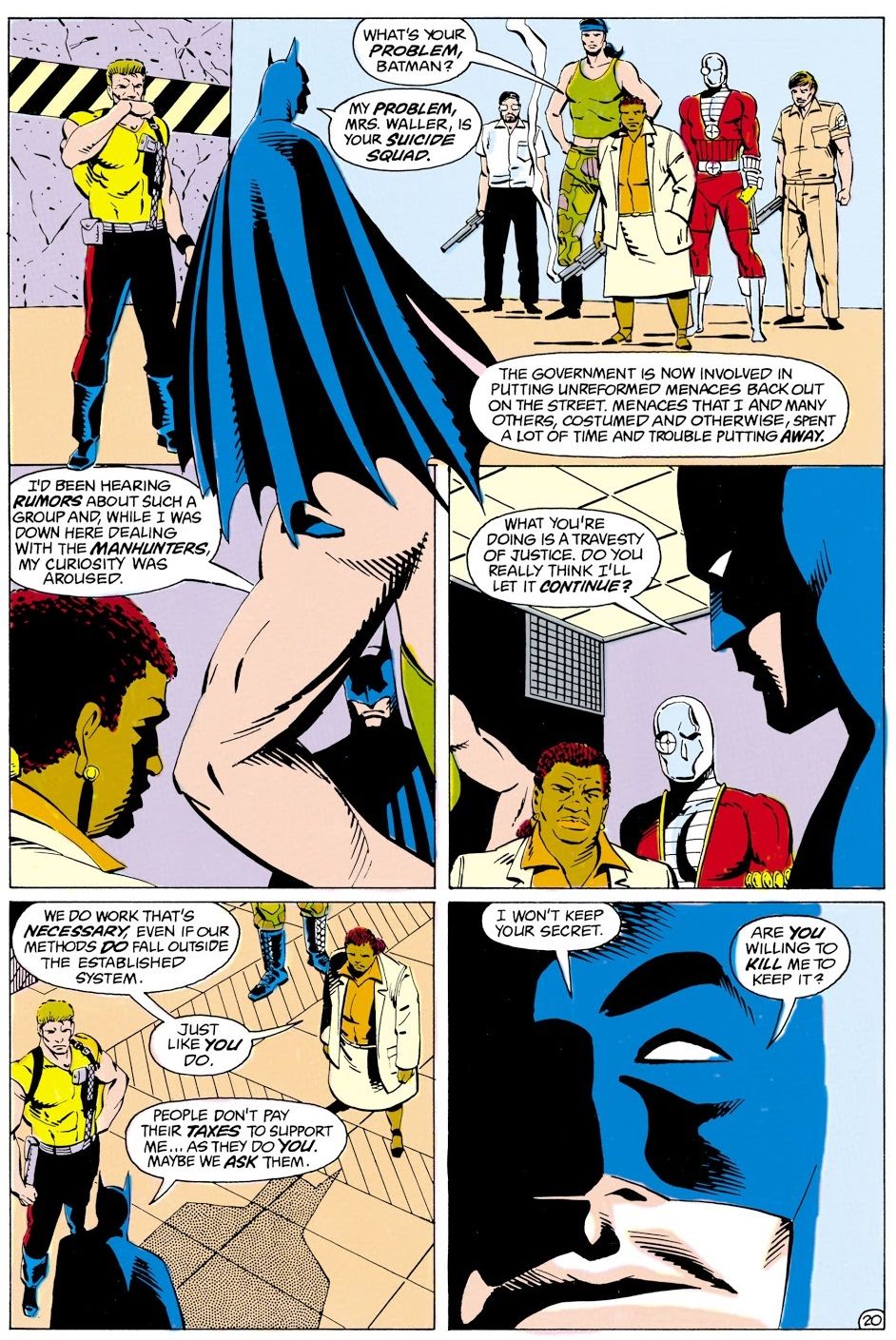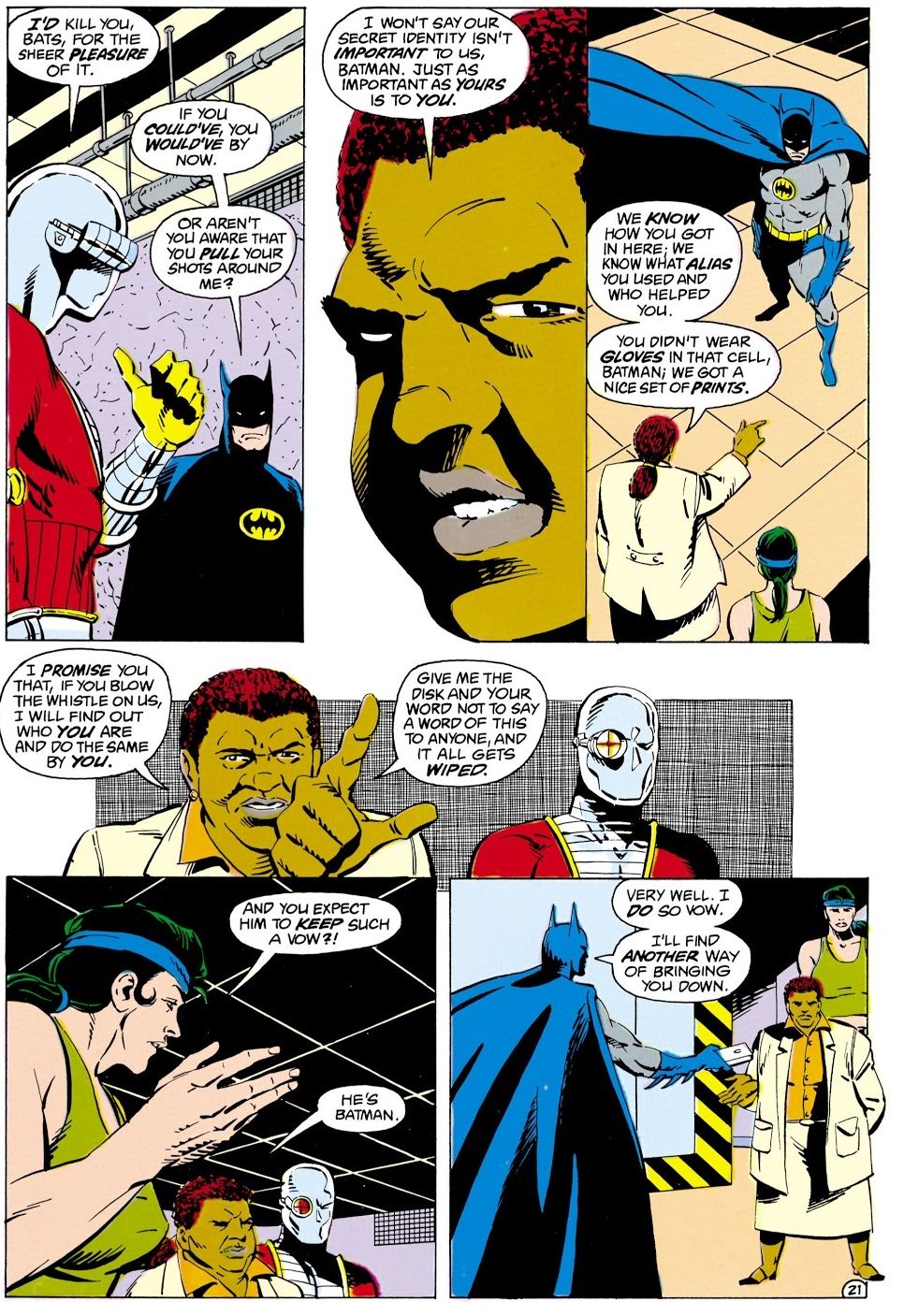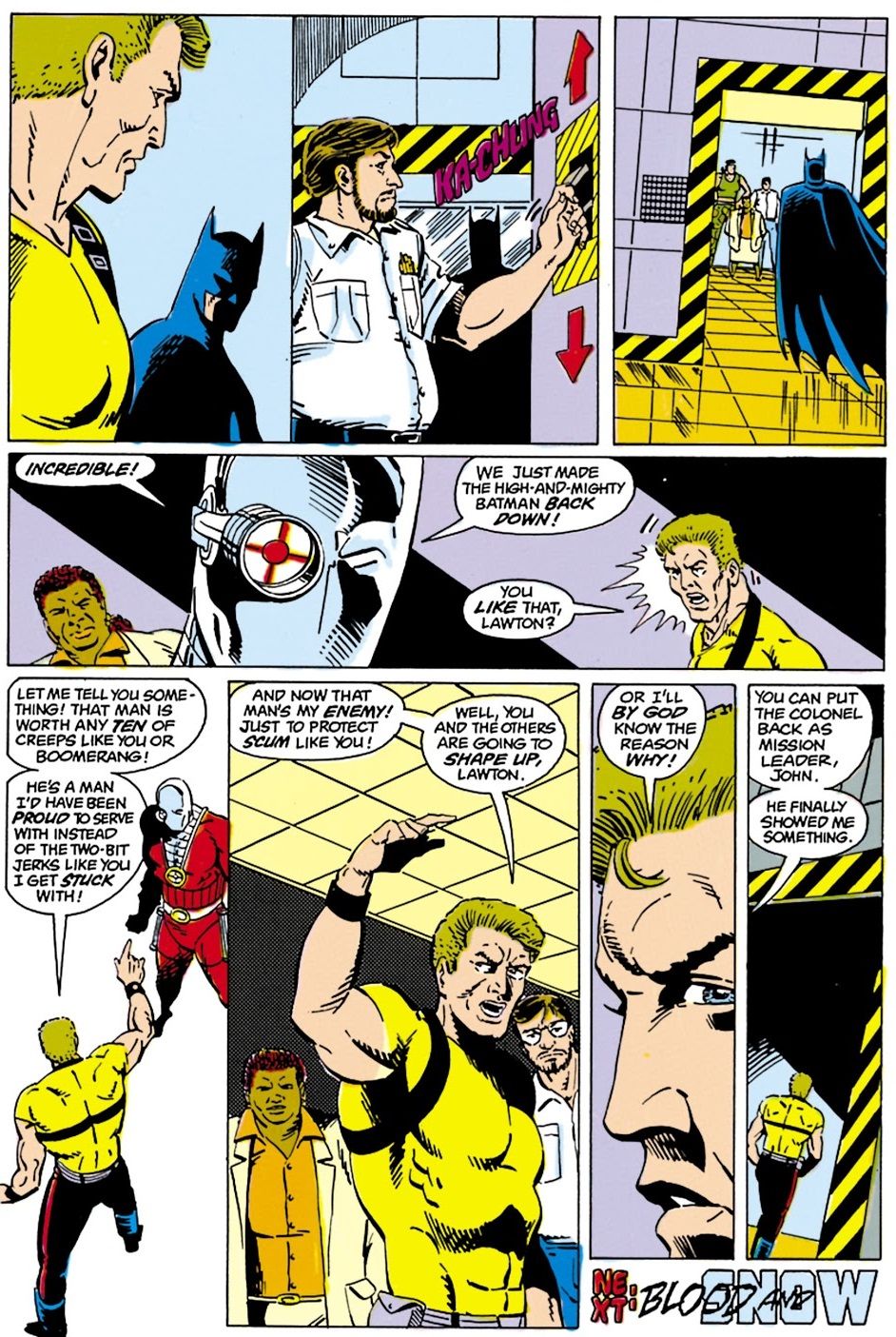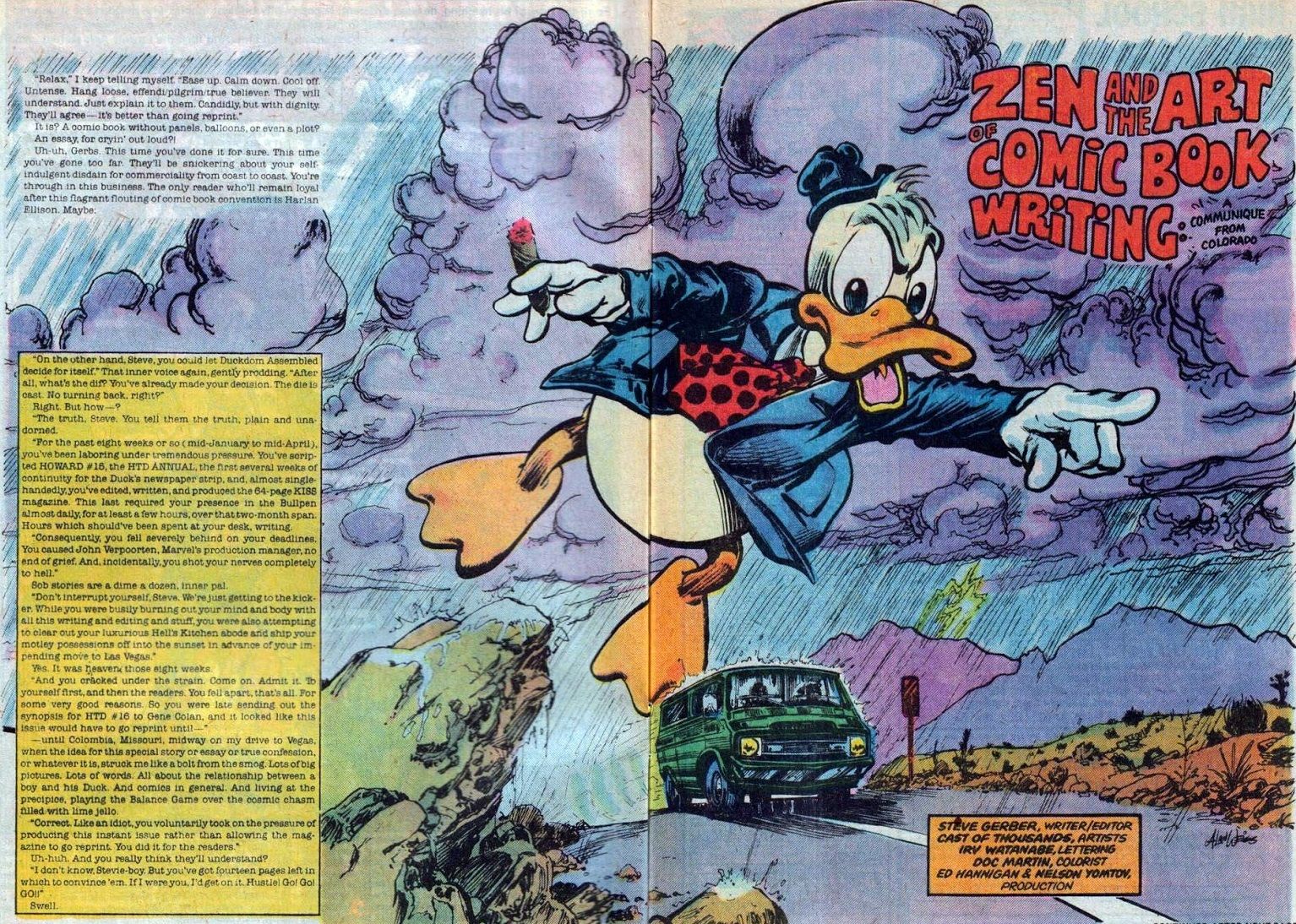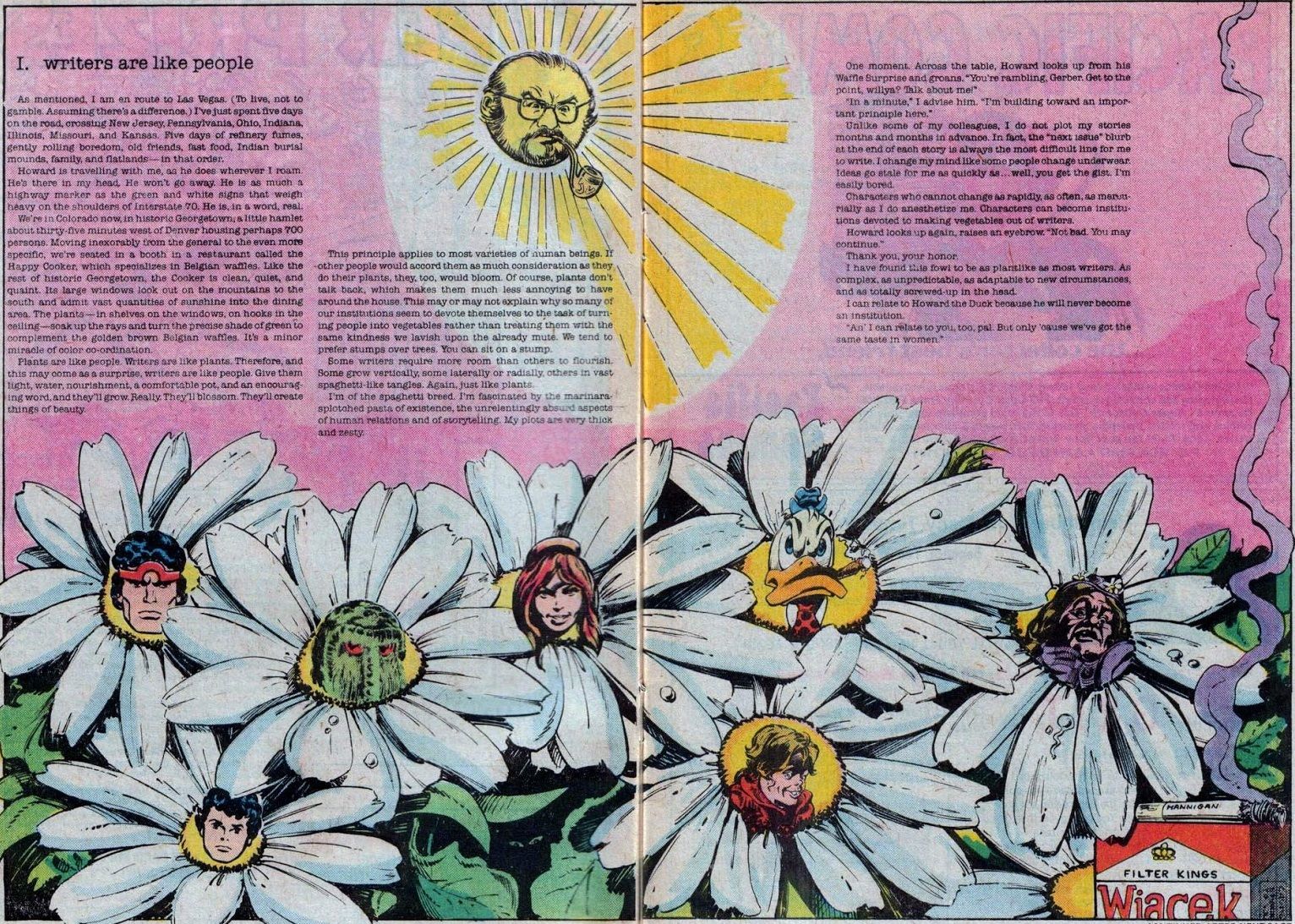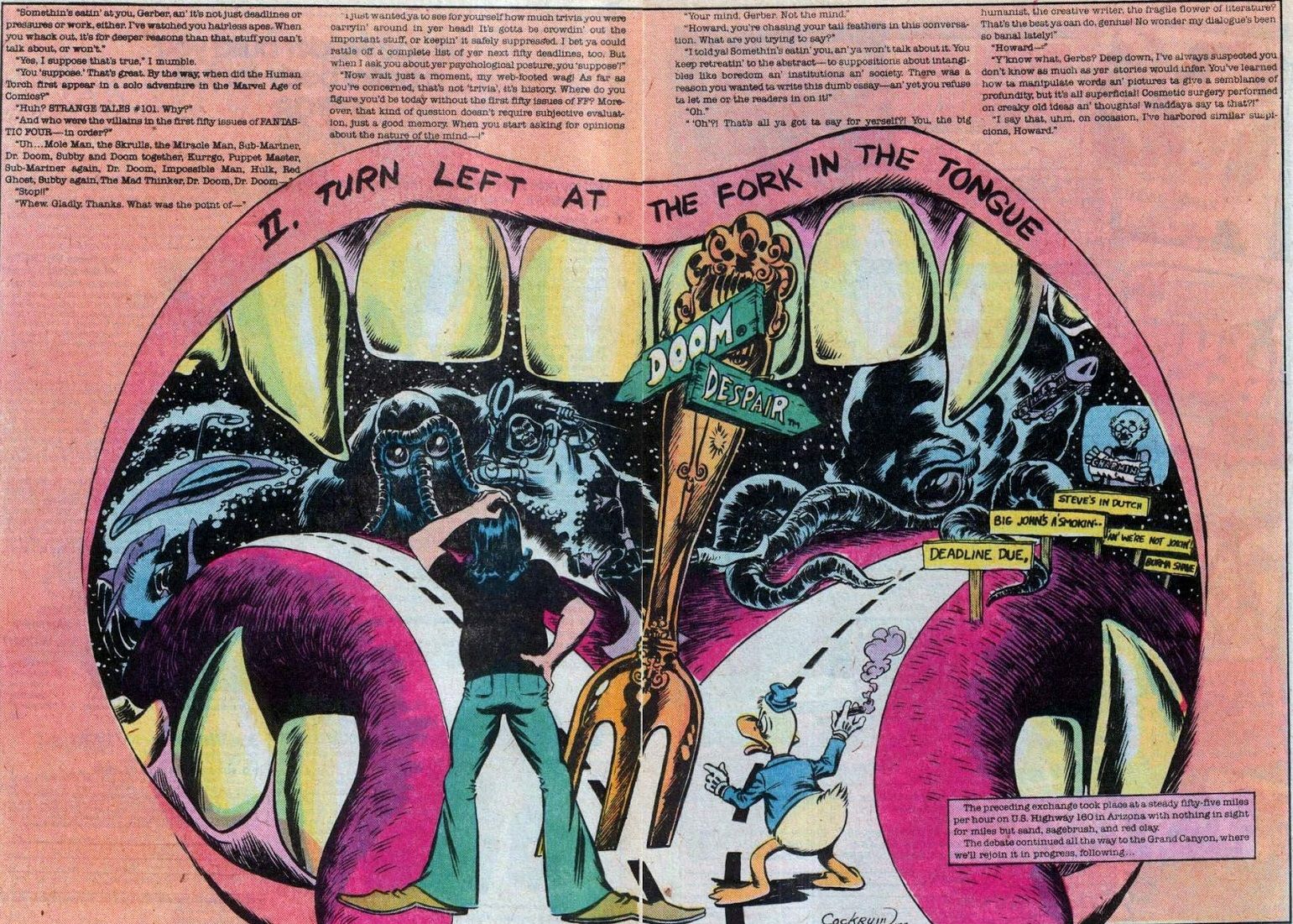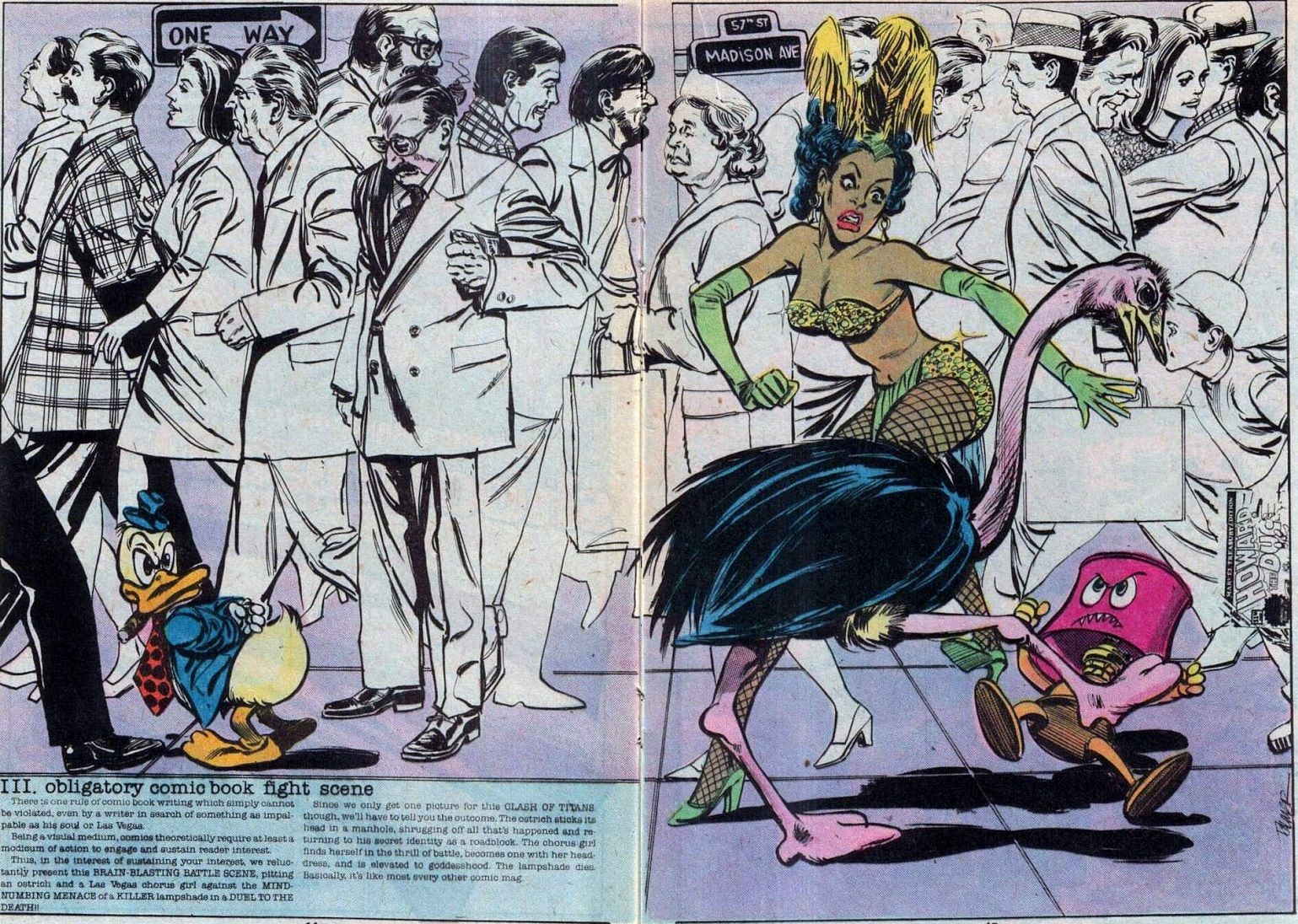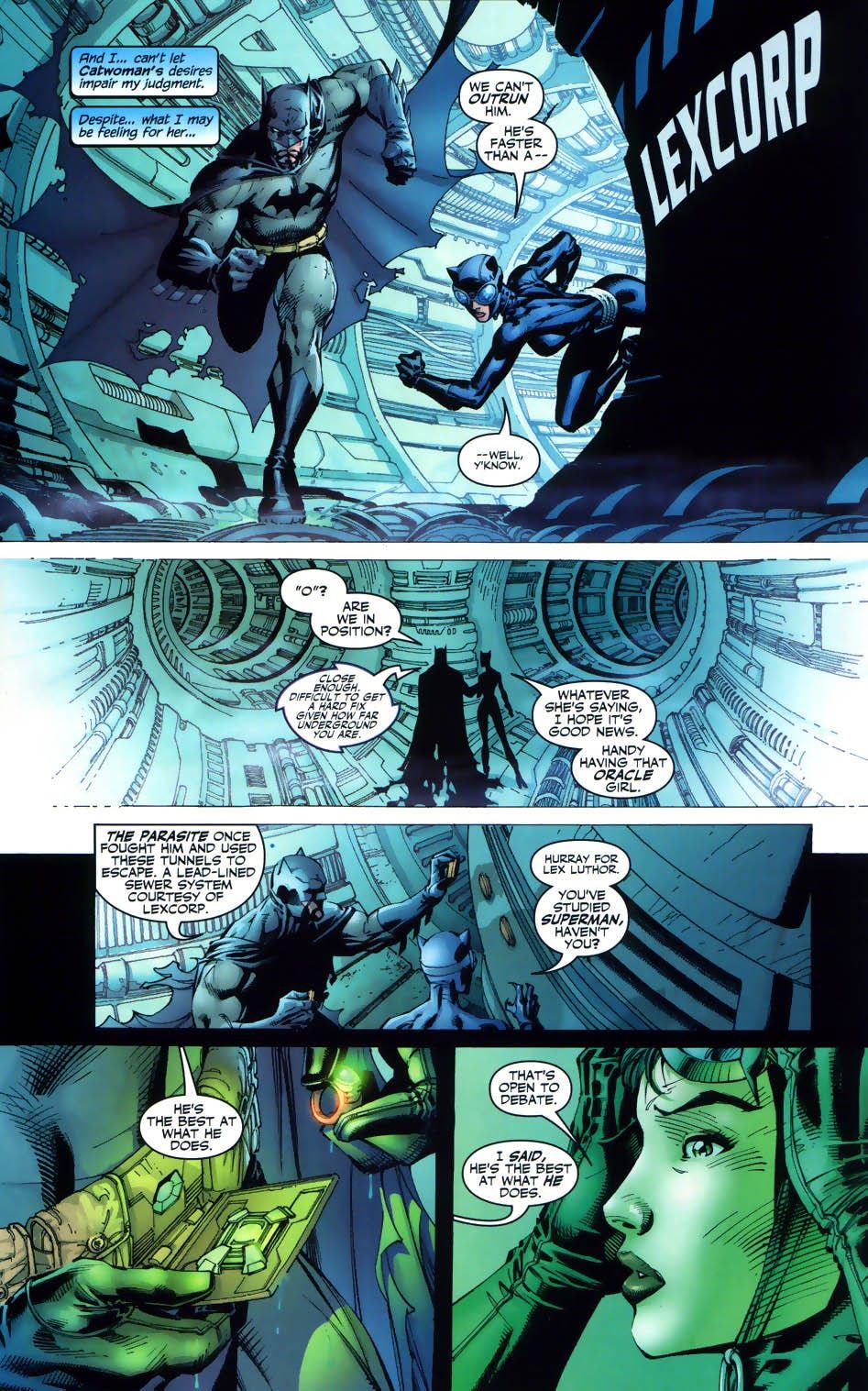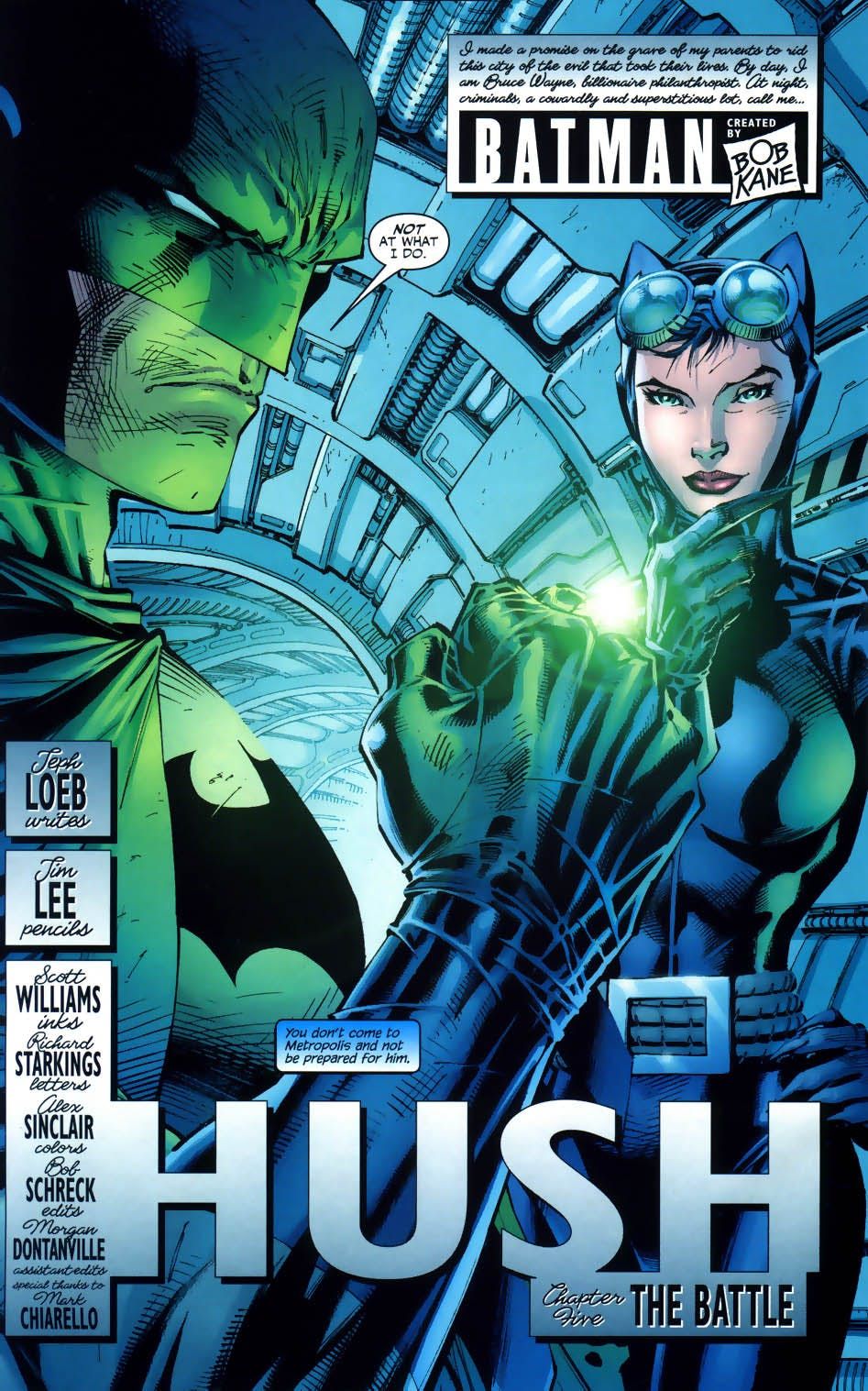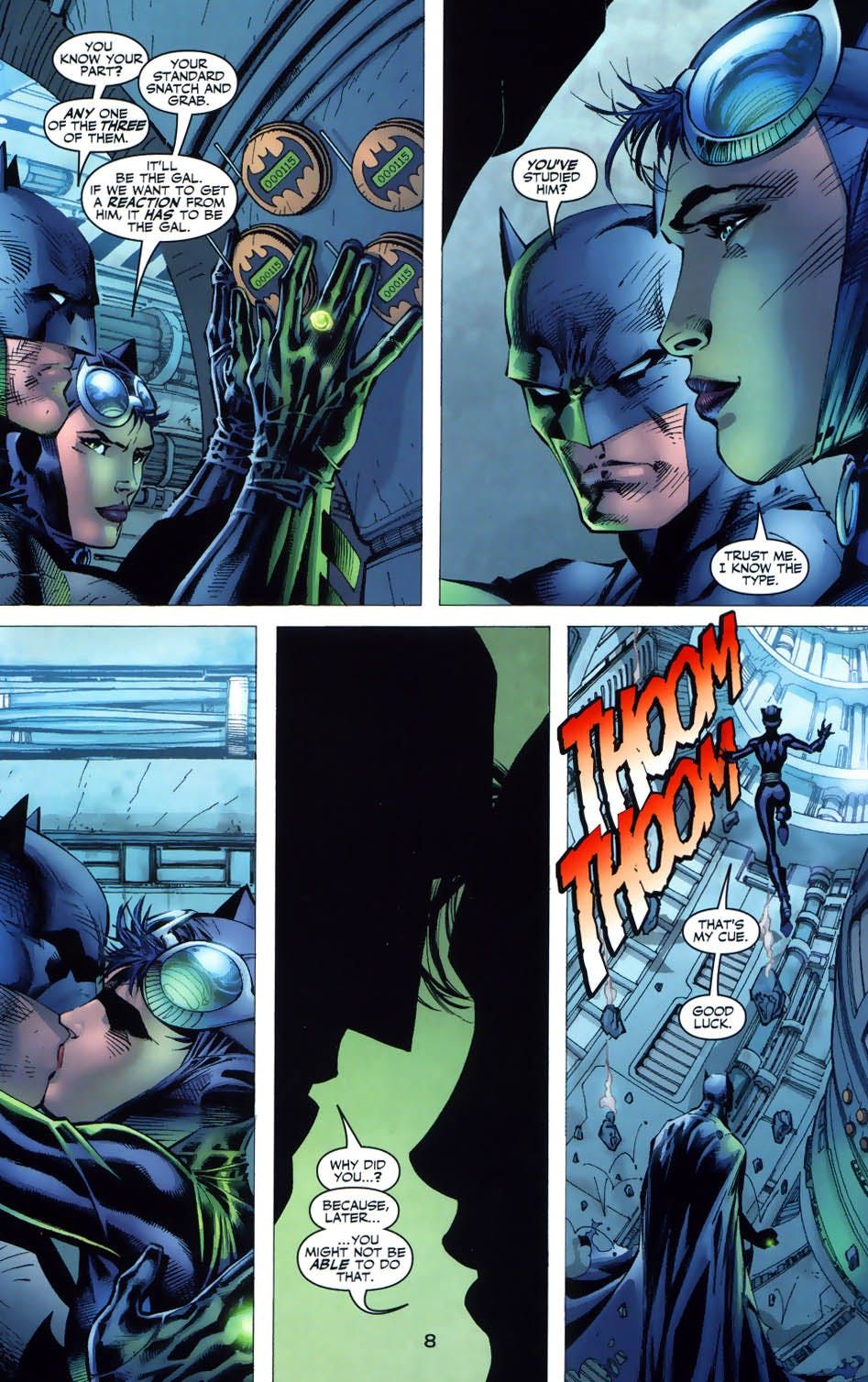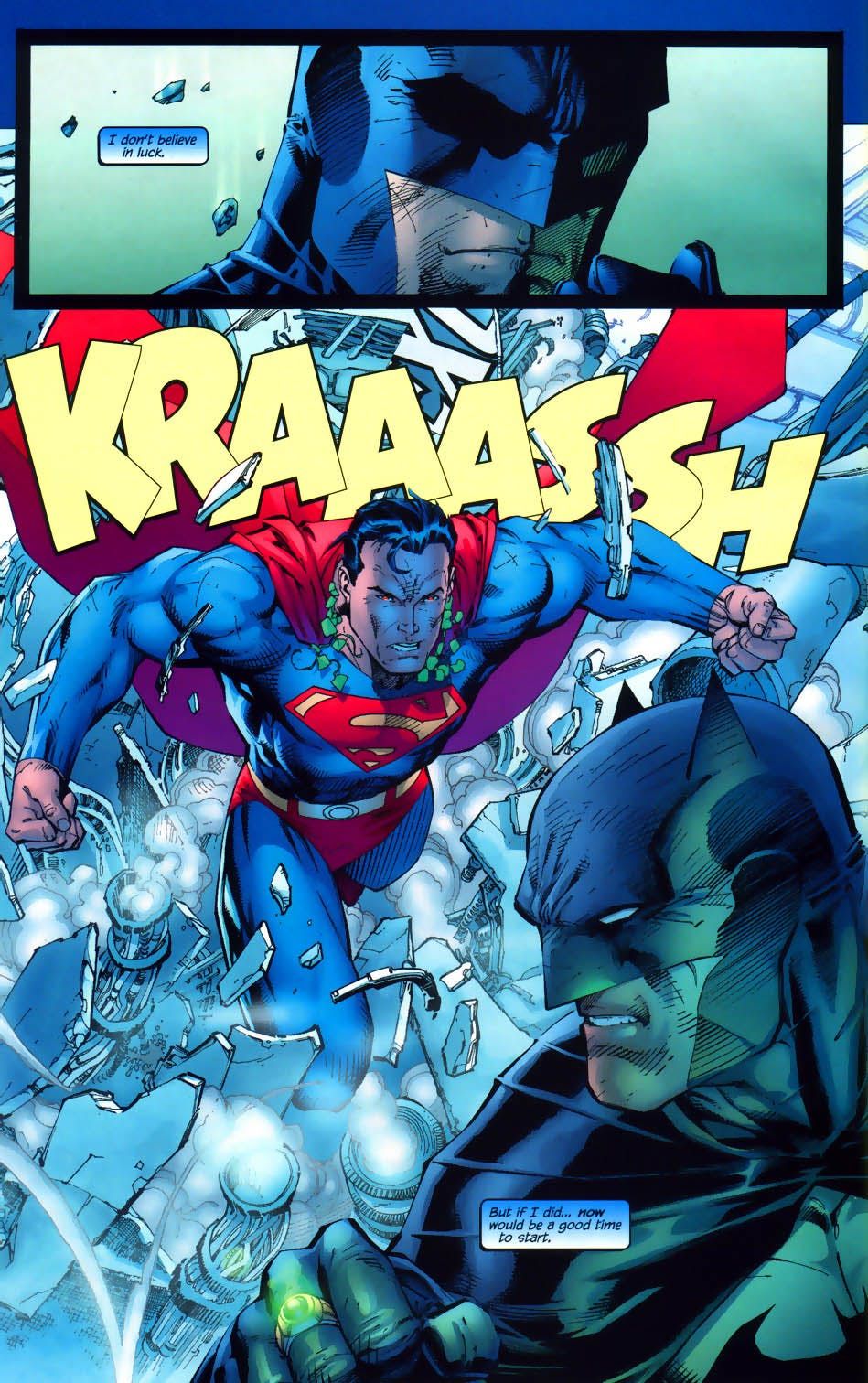The countdown begins now!!!
Here are the next five writers that you voted as your favorites of all-time (out of roughly 1,008 ballots cast, with 10 points for first place votes, 9 points for second place votes, etc.).
45. Matt Fraction – 223 points (2 first place votes)
In his early series, Casanova, Matt Fraction had a good deal of fun with the comic book format and trying new approaches of comic storytelling. That inventiveness has carried over to his current work, Sex Criminals, which Fraction has been working on with artist Chip Zdarsky for years now. In Sex Criminals, Fraction uses a blend of humor and compelling characters to tell engaging pairings, like when Suzie meets Jon at a party in Sex Criminals #1. Suzie has the ability to freeze time when she orgasms, so she is shocked when she learns that she is not alone...
This type of offbeat interaction is what drove Fraction's stellar Hawkeye series, as well, where Fraction developed the female Hawkeye, Kate Bishop, into one of the top female characters in the entire Marvel Universe, while also revitalizing Clint Barton's comic career. In fact, Fraction and artist David Aja's innovative approach to the Hawkeye series (mostly taking the series away from standard superhero stories and focusing on the human aspects of Clint Barton) make it probably one of the most influential Marvel Comics of the past ten years. Lots of acclaimed Marvel series can trace their beginning back to Hawkeye, in one shape or form. In fact, if you took a random Marvel Comic book from, say, 2005 and a random Marvel Comic book from this week and compared them to one of Fraction's Hawkeye issues, I would bet you donuts to dollars (at least here in NYC, donuts are more than a buck nowadays) that they are most comparable to Hawkeye. That is how big the influence of Fraction's work was.
Between Casanova and Sex Crminals, of course, Fraction also made a major name for himself writing nearly all of Marvel's major characters, including a long run on Iron Man and significant stints on Uncanny X-Men and Thor. He also wrote one of the greatest tributes to the Peter Parker/Mary Jane Watson marriage ever in a Sensational Spider-Man Annual one year. That comic got a lot of support in our recent "Top One-Shots of All-Time" poll, but fell just a bit short of the Top 50 (the #51 story period was the first appearance of Death, by the way, just in case anyone was curious).
44. Keith Giffen – 230 points (1 first place vote)
Keith Giffen has worked as a plotter on a number of classic series, from his beginning on Legion of Super-Heroes with Paul Levitz to his continued work on the Legion (where he and Tom and Mary Bierbaum dramatically altered the world of the Legion). He has done flat-out humor with Ambush Bug and he has done more serious fare (like his Magnus: Robot Fighter series that he scripted as well as plotted). Here's a bit from his first Ambush Bug series, making fun of the changes in DC's continuity following Crisis on Infinite Earths...
His most famous work, though, is definitely his run on Justice League with scripter J.M. DeMatteis. The concept of the book is that Giffen had to come up with an idea for a Justice League series after most of the top heroes were now no longer available to him after Crisis.
Without the major heroes, Giffen instead attempted to develop the personalities of the heroes they WERE given, particularly once two of the heroes they were given, Blue Beetle and Booster Gold, lost their individual series, as that gave Giffen free reign with how to write them. Giffen also spotlighted the League liaison, Maxwell Lord, who formed the team for fairly nefarious reasons but soon turned out to be a good guy. Later on, due to a lack of female characters on the team (and lack of notable female heroes available period) when Canary was taken from them, Giffen added two obscure members of the Global Guardians who soon became stalwart members of the team, Fire and Ice.
The book is most known for the humor of the title, which was a major aspect of the book - it really was a situation comedy.
Here is the first usage of "Bwah Ha Ha" that shows what the comedy of the book was like...
Giffen and DeMatteis built this strange superhero book up to becoming one of DC's most popular comics for five years! They are currently writing Scooby Doo Apocalypse, which deftly matches their use of humor and darkness.
43. John Ostrander – 242 points (4 first place votes)
John Ostrander got into comic book writing relatively late, as his first career was in the theater. He has more than made up for lost time over the last thirty years, first at First Comics, writing Grimjack and then at DC Comics, writing the Suicide Squad and Firestorm and later The Spectre (plus various other mini-series and a run on Martian Manhunter).
Ostrander excels at coming up with multi-faceted characters and then playing them off against each other in thoughtful plots. His work on The Spectre had some of the most interesting comic book discussions of religion out there. In the Suicide Squad, he developed one of the great new characters of the 1980s in Amanda Waller, the conflicted head of the Suicide Squad. Check her out standing toe to toe against Batman (who had infiltrated the prison that the Suicide Squad used as a home base to investigate rumors of the government using supervillains as operatives)....
Another major character who was introduced in Suicide Squad was Oracle. You see, after the Killing Joke, Ostrander and his wife, Kim Yale, were irritated at how Barbara Gordon was used in that story. Yale, in particular, really wanted them to try to find a way to give Barbara Gordon some agency back, so the two of them came up with the idea of making Barbara a computer hacking superhero, all while in a wheelchair, thus giving the world the most notable hero in a wheelchair since Professor X!
Ostrander also wrote for Dark Horse's Star Wars line for years, including launching one of the best Dark Horse Star Wars series of all-time, Star Wars Legacy (set 125 years after Return of the Jedi). He is currently working on two new series with his longtime collaborators, Jan Duursema and Tom Mandrake (Duursema did most of Ostrander's Star Wars work and Mandrake did Firestorm, Spectre and Martian Manhunter). The Mandrake one is a vampire story called Kros: Hallowed Ground and the Duursema one is a sci-fi tale called Hexer Dusk.
Page 2: [valnet-url-page page=2 paginated=0 text='See #42-41!']
42. Steve Gerber – 250 points (6 first place votes)
Few writers were as much "ahead of their time" as Steve Gerber. Nowadays, it seems like every other writer is bringing a "real word" vibe to their superhero comics, but back in the 1970s, when Gerber decided to bring "real world" issues into his comics, it was a lot more novel of a concept. He was not alone in doing so, of course, but unlike say, a Don McGregor, Gerber managed to do it in a way that also still appealed to a mass audience. He got in his real world topics through entertaining characters and bizarre plots. Gerber was certainly one of the more outlandish writers of his day, something that was spotlighted in both his acclaimed Defenders run and his stint on his most famous creation, Howard the Duck.
It was during his run on Howard the Duck that he wrote one of the most outlandish comic book stories ever, the issue-long ode to writer's block, "Zen and the Art of Comic Book Writing,"
Even in his later years, Gerber still managed to be ahead of the game. He wrote an acclaimed series for DC, Hard Time (about a young teen who has powers that flared up at the wrong time and made it seem like he was a murderer, so the series follows his prison life), that would have fit in beautifully as a modern-day Image series. At the time it came out, though, it was probably just too offbeat to be accepted. However, it still lasted longer than expected, as it launched with a whole line of similar titles and all of the other titles were canceled and yet Hard Time was given a second volume to see if it couldn't catch on as a Vertigo book instead (sort of like how Transmetropolitan was launched as part of a separate line of comics and when that line fell apart, Transmetropolitan moved over to Vertigo and lasted for years).
41. Jeph Loeb – 253 points (5 first place votes)
After starting his career as one of the top screenwriters in Hollywood (Loeb co-wrote both Commando and Teen Wolf! Talk about variety!). A few years later, while working on a possible Flash film that fell through, Loeb was told he should also pitch for a comic book at DC. Loeb's old friend from his childhood, Elliot S! Maggin (Loeb's step-father was a Vice President at Brandeis University when Maggin was a student there and Maggin would often have dinner with their family, befriending their teenager, Jeph. Jeph even gave Maggin the idea for Maggin's second comic book script ever, the classic "Must There Be a Superman?") was an editor at DC Comics, so he edited a Challengers of the Unknown miniseries by Loeb and an independent artist named Tim Sale who was making his first DC Comics work.
Loeb and Sale then reunited a couple of years later to do a Batman one-shot for Halloween. Then they did another one the next year. Then another one. And then the pair decided to turn their annual Halloween one-shots into a sweeping epic maxi-series known as The Long Halloween, examining the world of Batman after Year One, as Frank Miller had left the case of the crime bosses of Gotham quite unsettled. The Long Halloween led to a sequel, Dark Victory, and a spin-off of sorts starring Catwoman.
Loeb and Sale brought their comic book stylings to Marvel, doing a series of color-themed books, from Daredevil: Yellow, Hulk: Grey and Spider-Man: Blue.
Loeb returned to DC for the main Batman title where he and Jim Lee got together for one of the most popular storylines of all-time, the epic known as Hush. Loeb knows how to tell big stories, and few stories are quite as big as Hush. The story brought into play pretty much every major Batman villain and every major Batman ally, plus a few minor ones! All to tell the mystery of someone who knows Batman's secret identity and is trying to destroy him.
Few parts of Hush spotlight Loeb's willingness to go BIG more so than first having Batman and Catwoman finally get together Post-Crisis and then have Superman show up under the control of Poison Ivy...
See what I mean? Loeb knows so well how to use the BIG moment. And he is a favorite writer for so many artists because he knows how to get the best out of their artwork. He's an artist's writer, for sure. It is little surprise that the top artists in the field have all lined up to work with him on various projects.
He followed up Hush by launching and then having an extended run on a Batman/Superman team-up series that pitted the heroes against President Lex Luthor and then introduced a brand-new Supergirl (who Batman doesn't trust) and then saw the Legion of Super-Villains alter the past so that Batman and Superman are villains. He worked with star artists Ed McGuinness, Michael Turner and Carlos Pachecho on this run.
Between Hush, Superman/Batman and The Long Halloween, Jeph Loeb is responsible for three of the most popular Batman story collections of all-time.
Loeb then went back to Marvel where he introduced the Red Hulk in a hit series with Ed McGuinness.
Loeb has mostly been working in television for the past decade, but he has not forgotten his comic book connection at all, as he is the president of Marvel Television (they did all of Marvel's Netflix series). Loeb has still managed to do some comic book work here and there in

